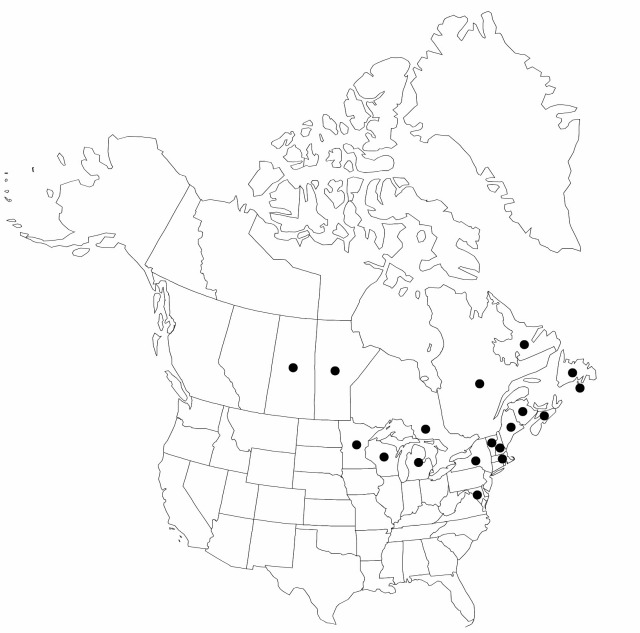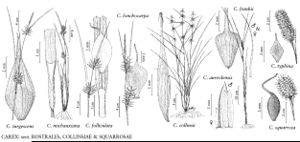Carex michauxiana
Linnaea 41: 336. 1877.
Culms obtusely trigonous in cross-section, 15–70 cm, smooth. Leaves: ligules 1.2–3 mm, wider than long; blades yellowish green, M-shaped to flat, widest leaves 1.6–3.5 (–4.2) mm wide, smooth abaxially, minutely papillose adaxially, especially distally. Inflorescences 1.8–18 cm; bract sheaths with apex concave; proximal (1–) 2–3 (–4) spikes pistillate, distal spikes erect, aggregated or the proximal sometimes remote, ovoid. Pistillate scales narrowly ovate, mostly 1/3–2/3 length of perigynia, apex acute. Anthers 1.1–2.7 mm. Perigynia spreading or the proximal somewhat reflexed, yellowish green, 20–26-veined, essentially uninflated, lanceolate, 8.7–12.1 × 1.3–2.1 mm, 4–7 times as long as wide, apex tapered, bidentulate; beak absent. Achenes 2.2–3 × 1.2–1.7 mm.
Phenology: Fruiting late spring–summer.
Habitat: Bogs, fens, lakeshores, stream banks, open seeps, in sandy or peaty, often acidic soils
Elevation: 0–1000 m
Distribution

St. Pierre and Miquelon, Man., N.B., Nfld. and Labr., N.S., Ont., Que., Sask., Maine, Md., Mass., Mich., Minn., N.H., N.Y., Vt., Wis.
Discussion
Carex michauxiana is closely related to the east Asian C. dolichocarpa C. A. Meyer ex V. I. Kreczetowicz.
Selected References
None.
Lower Taxa
"shortened" is not a number.
